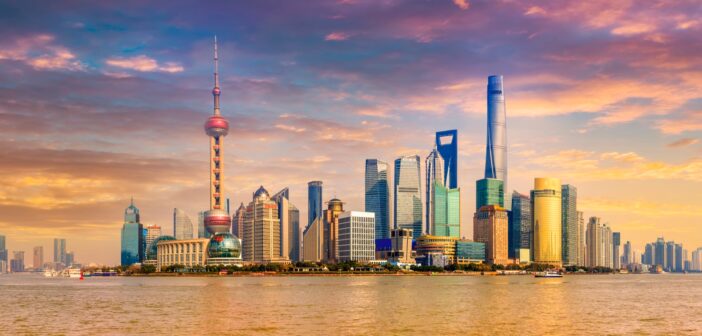Buy a house with mortgage and then get so frustrated with the delays that you just stop paying the EMIs. This sounds funny, illegal and outrageous, but has already started trending in the world’s largest property market of China. The global property markets in general and susceptible markets like India in particular are watching the developments in the neighbourhood with a hope & prayer that such unpleasant events should not confront them. A Track2Realty analysis.
India too has had its moment of such despair in the recent past. Mortgage boycott that has started in China is not something that the Indian housing market has not been witness to. Of course, in China this has snowballed into a major storm with buyers from over 100 cities taking it to social media to announce the mortgage boycott against the erring builders.
In India, before the intervention of Supreme Court to ensure Amrapali home buyers get the justice, a small section of home buyers had stopped paying the EMIs, while the majority continued to pay with the fear that their Credit Score would be spoiled and future loan eligibility would suffer.
Prima facie, there are many parallels between the Indian and the Chinese property markets. In both the countries the home buyers are confronted with project delays, defaults, abandoned projects, ghost cities, liberal lending and, last but not the least, the developers’ uncanny ability to dodge the due process of law and get away with the buyers’ hard-earned money.
And hence, the analysts are keeping a close watch on the unexpected developments in China where the buyers are on a warpath with the builders and threatening mortgage boycott as a last resort.
What happened in China and why it happened? Fed up with the project delays and stuck up housing, thousands of Chinses home buyers that had paid for homes yet to be finished from property developers announced in July that they would refuse to pay mortgages on homes that had not been delivered.
The boycott began in Henan province and has since spread to Hunan, Hubei, Shaanxi, Hebei, and other 100 0dd provinces. Total mortgages at stalled Chinese developments amount to 2 trillion yuan ($296 billion), as per the analysts at GF Securities Co. and Deutsche Bank AG.
The mortgage boycott comes a year after major Chinese property developers began to default on loans worth billions of dollars. The current situation is a culmination of decades of rapid property expansion followed by regulators’ efforts to deleverage the industry. Doesn’t it sound like the Indian property market? In my opinion, there is hardly any difference. Any policy efforts to deleverage the real estate sector and scrutinise liberal funding would lead to similar kind of chaos in the Indian property market as well.
After all, the total value of stressed loans to real estate in India is at roughly 2.5 trillion. Out of this, about 30% or INR 74,100 crore is in the high stress category and would be difficult to resolve. The remaining 70% or INR 1.73 trillion is categorised as medium stress and is in the process of being recovered. The bulk of the stressed loans or approximately 63% have been disbursed by Non-Banking Financing Companies (NBFCs) and Housing Finance Corporations (HFCs); the remaining 37% of the money is owed to banks.
What is even more disturbing is the fact that INR 90,000 crore is stuck in cases that are undergoing the corporate insolvency resolution process (CIRP). There are close to 300 real estate cases that have been admitted to the NCLT and are awaiting resolution. The number of projects that are waiting to be admitted in NCLT is believed to be significantly higher, possibly close to 1,000. The average recovery has gone down in the IBC process from 30-35% earlier to less than 20%, of late.
Despite this grim scenario, it is a matter of concern that the home sales have not declined sharply post Covid. The Indian developers may not be as fancy in their sales strategy as their desperate Chinese counterparts who are even accepting, in leu of cash, down-payments in wheat, garlic, watermelons and peaches, they are yet a desperate lot with standing inventory in India’s Top 10 cities alone being more than 7 lakh units.
About 70 per cent of the China’s household wealth is stored in property, along with 30-40 per cent of bank loan books, while land sales account for 30-40 per cent of local government revenue, according to Pantheon Macroeconomics. In comparison, around 80% of India’s household wealth is stored in property, with 60-80 per cent of bank loan books. Isn’t India prone to more risk if the property market is deleveraged, either by policies or the market forces?
In both China and India, debt to asset ratio of both the home buyers as well as the developers has increased exponentially while the debt to income ratio of the buyers have gone up because the property in any of the bigger cities is just not affordable. Most of the global studies have suggested that any house that costs more than 5 years of your gross income is not affordable. Second simultaneous condition is that the EMI should not be more than 50 per cent of your take home salary. But major cities of Indian and Chinese property market have gone way ahead of this affordability curve.
In India, the Chinese mortgage boycott should of matter of concern to the policy makers more than the home buyers. The home buyers’ patience has been more than their Chinese counterparts thus far. But then with the life’s costliest purchase getting stuck up could evoke even the dove and turn him into a hawk, when there is a global precedent around. Are the policy makers listening to the alarm bells? Well, my guess is as good as yours.
Ravi Sinha
#RaviTrack2Media
Track2Realty is an independent media group managed by a consortium of journalists. Starting as the first e-newspaper in the Indian real estate sector in 2011, the group has today evolved as a think-tank on the sector with specialized research reports and rating & ranking. We are editorially independent and free from commercial bias and/or influenced by investors or shareholders. Our editorial team has no clash of interest in practicing high quality journalism that is free, frank & fearless.
Subscribe our YouTube Channel @ https://bit.ly/2tDugGl





